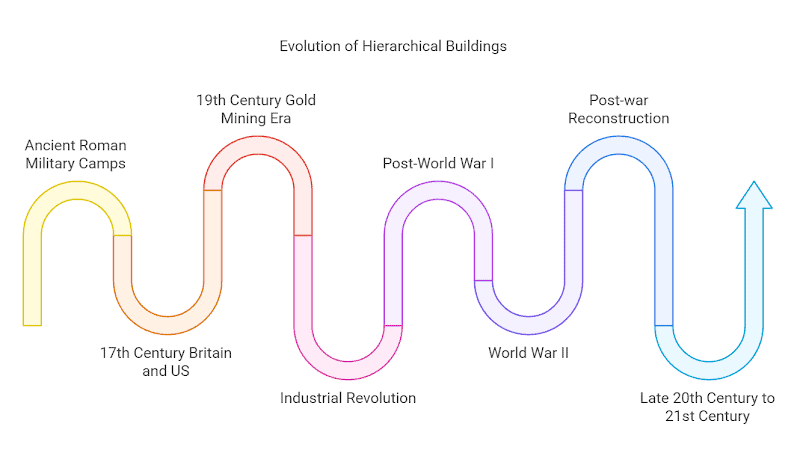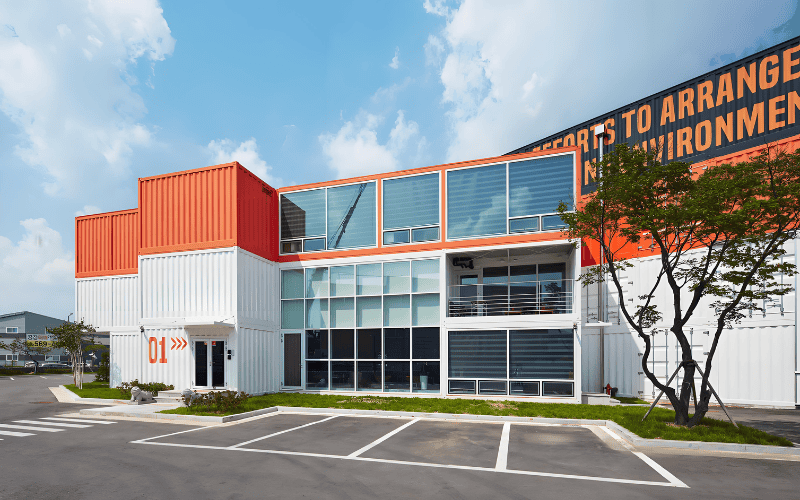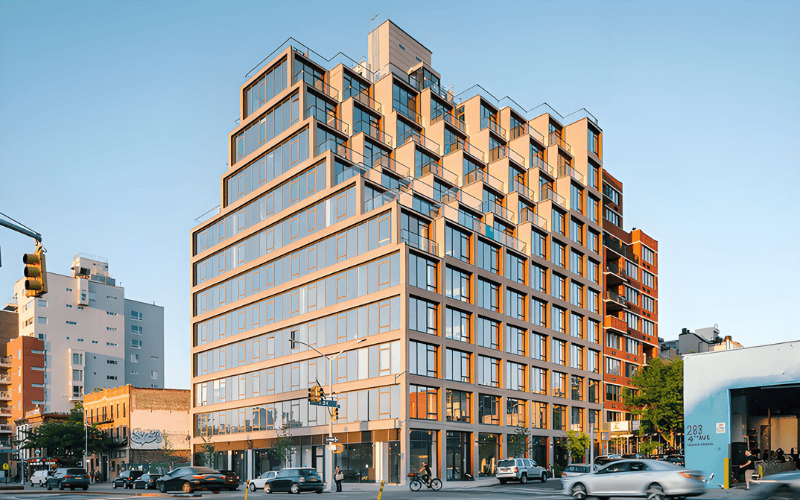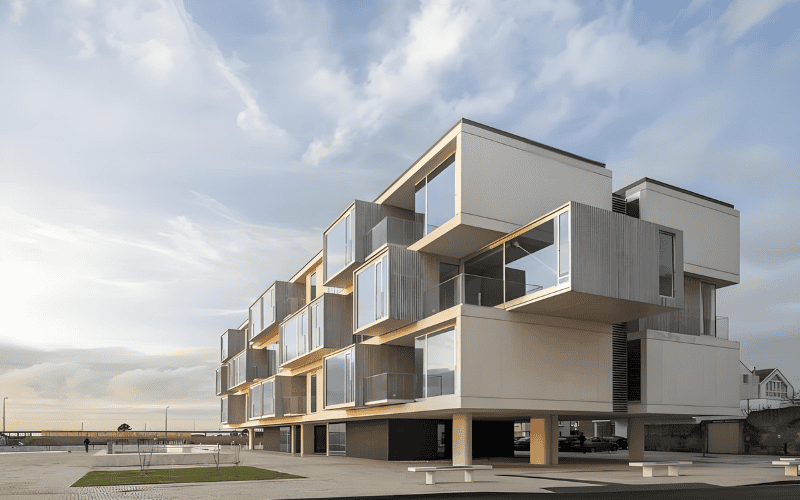Have you ever thought that building a house can be as simple and flexible as building blocks? Modular construction is such an innovative way. Through prefabrication and modular design, it makes the construction process more efficient, more environmentally friendly, and more adaptable to the fast-paced life needs of modern people.
Today, let’s talk about the history of modular construction and see how this method started in ancient times and evolved over hundreds of years to become the modern construction method we see today. As one of the leaders in this field, SteelPRO PEB has been committed to promoting the development of modular construction through innovation and exquisite craftsmanship. We not only inherit this time-honored construction method, but also incorporate modern technology to provide customers with smarter and more efficient construction solutions.

Early history of modular construction
Ancient and medieval origins
The concept of modular construction can be traced back to ancient times, such as the military camps in ancient Rome. These military camps often used prefabricated components for rapid assembly, which was convenient for movement and expansion. Similar design ideas continued in the Middle Ages, when movable structures and modular methods allowed buildings to be quickly assembled and disassembled as needed, providing inspiration for later architectural design concepts.
SteelPRO PEB continues this convenient and efficient construction concept and is committed to providing faster and more efficient construction solutions through modular methods. We ensure the quality and reliability of each modular building component through careful design and high-quality materials. We not only inherit the historical modular wisdom, but also bring users a more contemporary building experience with the support of modern technology.
17th Century Britain and America
The true beginning of modular construction can be traced back to the early 1600s, when British craftsman Henry Manning designed the first transportable cabins, which provided convenience for immigrants about to go to Australia. The prefabricated design of these houses made them easy to transport and quickly assembled at the destination, marking the birth of modern modular construction.
Over time, this modular construction method gradually influenced the wider construction field, especially in the 19th and early 20th centuries. We not only inherited this innovative spirit, but also combined it with modern production processes to push modular construction technology to new heights. From the early simple structures to today’s high-quality, customizable buildings, SteelPRO PEB has always been at the forefront of the industry, meeting the needs of global customers for efficient and sustainable construction.

Modular Construction in 19th Century: Expansion and Innovation
The pioneering era in Australia and the United States
In the mid-19th century, modular construction began to be widely used in the gold mining era in Australia and the United States. At that time, thousands of immigrants flocked to the New World and they were eager to build homes quickly. Modular construction perfectly met this need with its convenient transportation and rapid assembly characteristics. This construction method not only saves time, but also provides a strong living environment in extreme conditions. SteelPRO PEB is well aware of the importance of modular construction for efficient and fast delivery. Therefore, we continue to lead technological innovation and apply the concepts of precision manufacturing and rapid assembly in our projects to help customers achieve the best solutions in various environments.
The impact of the industrial revolution
As the industrial revolution progressed, the rapid development of manufacturing technology provided new possibilities for modular construction. The emergence of new materials such as cast iron and steel made building components stronger and more adaptable. This change not only improved the durability of modular construction, but also made it adaptable to more diverse uses. We combine modern manufacturing technology with traditional modular concepts to create high-quality, market-oriented building products. It is this combination of historical accumulation and technological innovation that gives us a competitive advantage in the field of modular construction.
Modular Construction Developed in the early 20th century
Demand after World War I
After World War I, Europe faced a severe housing shortage. To quickly solve this problem, modular construction technology was widely used. Especially in the post-war reconstruction process, modular construction provided a fast and economical housing solution for millions of people who lost their homes. SteelPRO PEB realized that in the process of modern urbanization, fast delivery and flexible configuration are the key to meeting customer needs. Therefore, we continue to improve the flexibility of modular design and combine a variety of building modules to meet the needs of different regions and customers.
The rise of modern prefabricated housing
With the acceleration of industrialization, especially in the United States, Sears launched prefabricated houses, which marked the scale and standardization of modular housing production. In the early 20th century, more and more families began to come into contact with prefabricated houses. This economical and efficient housing method has become an ideal choice for ordinary American families. Our modular building solutions not only inherit the excellent traditions of history, but also incorporate modern technology to make building delivery faster and meet the needs of future development.
Related Reading:

World War II and Postwar Impact Modular Construction
Wartime and Postwar Applications
During World War II, modular construction technology was widely used around the world, especially in the military. In order to cope with the rapidly growing demand for military accommodation, modular construction became the core of the solution. The rapid installation of steel structures and prefabricated components greatly improved the speed and cost-effectiveness of construction. Whether it is temporary accommodation on military bases, factories or warehouses, modular construction provides an ideal solution with its flexibility and efficiency. In terms of steel structure construction and rapid installation, SteelPRO continues to optimize our technology to ensure that every project can be completed on an efficient and solid basis.
Post-war Reconstruction in Europe
After the war, many countries in Europe faced reconstruction tasks, especially in housing. Modular construction was widely used to quickly build temporary housing and reconstruction projects. Due to its standardized and fast construction characteristics, modular construction has become an indispensable element in the post-war reconstruction process. As a company that focuses on engineering quality and rapid delivery, we have focused on optimizing modular construction from the beginning to ensure that it can provide long-term and stable performance in various environments.
Advances and Innovations of Modular Construction in the Late 20th Century
Technological Advances
In the late 20th century, with the rapid development of technologies such as computer-aided design (CAD) and building information modeling (BIM), the design and construction efficiency of modular buildings has been greatly improved. Modern technology not only optimizes the structural design of buildings, but also predicts potential problems in construction, reducing errors and waste. We actively use CAD and BIM technology in the design, production and installation stages. These technologies allow us to more accurately control the production and assembly of each module, ensuring that each project can meet customer expectations and exceed industry standards.
Future and Prospects of Modular Construction in 21st Century
The Development of Contemporary Modular Construction
In the 21st century, modular construction has undergone tremendous technological innovation, especially in the application of 3D printing technology and automated manufacturing. Modular construction has gradually broken the limitations of traditional construction methods through intelligent manufacturing and customized design, providing more possibilities for future construction. It can not only meet the growing demand for housing, but also respond to global environmental challenges.
SteelPRO PEB has always been at the forefront of technology, using modern manufacturing processes and advanced design tools such as computer-aided design (CAD) and building information modeling (BIM) to improve the accuracy and efficiency of modular construction. As an industry leader, we not only focus on the structural safety of buildings, but also strive to explore how to achieve environmental friendliness and maximize resource utilization through innovative technologies. Every design and product of SteelPRO strives to reduce environmental impact while meeting functional requirements, contributing to a more sustainable future of construction.

Modular construction supplier: Future prospects of SteelPRO PEB
As the market demand for fast, efficient and environmentally friendly construction continues to increase, SteelPRO PEB will continue to lead the innovation and development of the modular construction industry. We are committed to developing more efficient production processes and promoting the in-depth application of automation and digitalization in modular construction. In the future, SteelPRO will not only continue to optimize existing products and technologies, but also launch more modular building solutions that meet future market needs. These solutions will further promote our influence in the global construction market and help more customers solve space and construction needs.
The future of SteelPRO is not limited to the design and production of modular buildings. We will also work closely with industry partners and technology companies to actively explore the development of fields such as smart buildings and green buildings to further promote the sustainable development of the industry. With our technical accumulation and market experience, SteelPRO PEB will always be at the forefront of the modular construction industry, leading the construction industry towards a more efficient, green and innovative direction.
FAQ
What are the origins of modular construction?
Modular construction dates back to ancient times, with early examples being Roman military forts and shipping prefabricated building parts. The modern modular home concept began in the 17th century when Henry Manning designed prefabricated homes in England that were shipped to Australia.
Who created modular construction?
The first step towards modern modular construction was in 1837 when London carpenter Henry Manning created the first prefabricated house for export to Australia, marking the beginning of modular homes as we know them.
When was modular construction invented?
The modern form of modular construction was developed in the 17th century, with the first known prefabricated house being shipped from England to the United States in 1624.
What is modular construction?
Modular construction involves building sections of a structure off-site in a controlled environment and then assembling them on site. This technique reduces construction time, minimizes waste, and generally saves costs, making it a more efficient and sustainable method of building.

